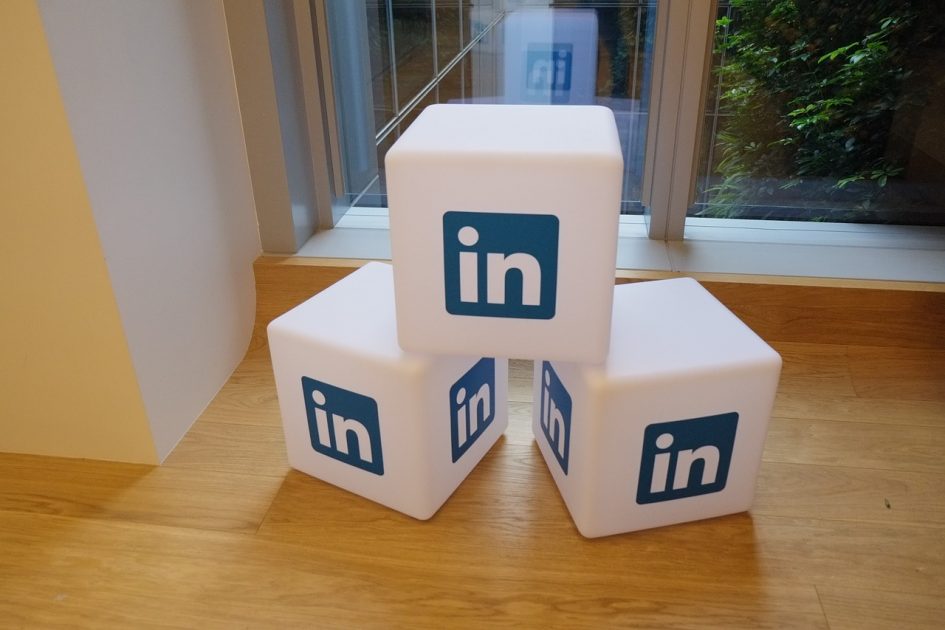LinkedIn is a well-established, big brand name. Everyone knows it, most people use it and since its launch in 2003 as the first professional social network, it has rocketed in popularity.
In January 2017, LinkedIn was bought by Microsoft Inc, which has inevitably affected its business strategy. However, its pre-purchase patent strategy is fascinating reading.
Small patent portfolio
Having grown into such a recognisable brand, LinkedIn realised that its relatively small patent portfolio made it vulnerable. In 2012, the company decided to launch a new patent strategy to mitigate the risk.
At that time, LinkedIn was growing fast, and yet only had 22 patents in its portfolio. This inevitably opened the company to high risks for patent assertion. Having reached almost $1 billion in revenue and a growth of 86%, the company realised that it needed a patent strategy.
Proven success
The company launched in May 2003, and three years later had increased revenue by 723% to $9.8 million. Between 2007 and 2011, it increased revenue by an average of 128% each year. LinkedIn went public in 2011 and by 2012 was making an annual revenue of approximately $1 billion.
Despite its 86% growth, increase in R&D of 95% and increase in staff by 63%, it had only one issued US patent and 35 pending patent applications. While executives had recognised the exposure risk, it had held off on dealing with patents until the company had proved itself successful.
Mitigating risk
In 2012, LinkedIn established an internal patent team and worked with a law firm on a risk mitigation plan. This presented two opportunities:
- Increasing organic filings in order to address future assertion risk.
- Patent acquisition to address immediate and future risk.
LinkedIn looked at 25 other high-tech companies and analysed their patent filing rate and R&D spend. The latter gives a good idea as to how much innovation is underway and how many patents are likely to come out of it in the future.
The goal for the patent plan included having the ability to continue delivering services and products to the growing customer base with a reliance on core tech. At the same time LinkedIn wanted to minimise risk from larger and more established patent holders.
Target filing rate
On this basis, the target filing rate was set at 0.25 patents per $1 million worth of R&D spend. By 2015, LinkedIn increased its organic patent filings to 0.42 per $1 billion investment in R&D.
These extra filings helped to narrow the gap caused by earlier low rates. To achieve this increase, LinkedIn totally shifted its patent culture and set goals and targeted projects. These included regular invention harvesting sessions involving small groups of engineers. Between five and ten people from one project would meet and discuss it, and out of this around 10 invention disclosures would be made.
Company integration
As the success of a patent programme depends on its integration into company culture, LinkedIn had an uphill battle from a cold start. While they initially used external firms, the company soon realised that they needed an internal patent team.
In 2012, the first full-time patent attorney was taken on board, along with an experienced paralegal. Soon after, the team was supplemented with more intellectual property staff. They also started working with an IP strategy firm.
Employee education
Internally, the company recognised the importance of educating staff about the importance of defensive patents. Inventors and engineers were also trained in patent applications, including who to contact and when.
This encouragement kept patents at the forefront of engineers’ and inventors’ minds, and the success of the programme was proven with the increase in organic patent filings before the company was sold to Microsoft.
It’s interesting to see the inception of a strategic patent portfolio plan in a large and successful company. LinkedIn execs waited until revenue reached a certain amount before they instigated a structured plan, which paid off over the next few years before the acquisition by Microsoft.
About Dawn Ellmore Employment
Dawn Ellmore Employment was incorporated in 1995 and is a market leader in intellectual property and legal recruitment.

